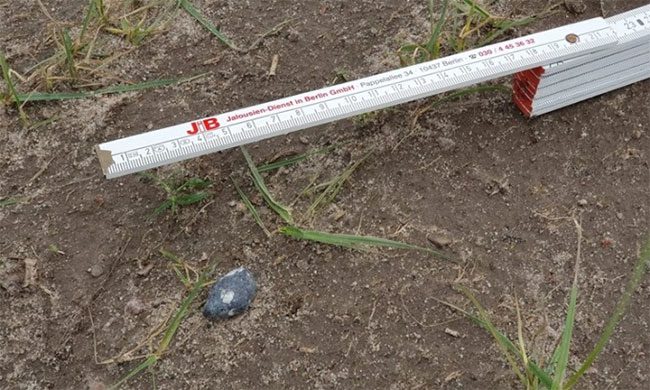A team of researchers at the German Natural History Museum has discovered remnants of an asteroid that exploded over Germany on January 21.
On January 21, an asteroid exploded in the skies above Germany just 95 minutes after a warning was issued. Researchers began to search for any debris that might belong to the meteorite that ignited in the atmosphere and fell to Earth. They have since found several fragments, as reported by IFL Science on January 26.

A fragment of asteroid 2024 BX1. (Photo: Cevin Dettlaff).
The large walnut-sized fragments of asteroid 2024 BX1 were collected by researchers from the Berlin Natural History Museum and their collaborators. They are conducting tests to confirm that these fragments originated from the extraterrestrial object. 2024 BX1 is the eighth object predicted to have a 100% chance of colliding with Earth.
This asteroid was first detected about three hours before the collision. Krisztián Sárneczky at the Piszkéstető Mountain Station of the Konkoly Observatory near Budapest, Hungary, discovered the object in the sky and reported the finding to the Minor Planet Center. This is an international system that contains a database of all small objects moving through the Solar System. The data was then automatically shared with astronomers.
Thanks to Scout, an automated collision assessment system that tracks the trajectories of newly discovered objects, researchers were able to clearly determine that asteroid 2024 BX1 would strike Earth. The bright fireball from the object was visible from the Czech Republic. It was expected that the debris would fall west of Berlin. Indeed, scientists found several small fragments in Havelland County.
2024 BX1 is estimated to be about one meter in size, so it poses no danger. It certainly broke into many pieces while passing through the atmosphere. However, collecting the remaining fragments is very important. If recovered soon enough, they will have less exposure to Earth’s contaminating factors and provide nearly pristine samples of the asteroid.
Research on meteorites and rocks from sample collection missions is essential to answer fundamental questions about the formation of the Solar System. Asteroid prediction systems also play a crucial role in ensuring the safety of Earth by detecting hazardous objects early enough to issue warnings or evacuate affected populations.
- We are the neurons of the universe: A creative theory reveals the mysteries of the universe and the brain
- The shape of the universe is not what you think: From the ancient round sky to the modern three-dimensional donut
- Real-life ‘werewolf’: Extraordinary physique, aggressive, attacks even polar bears


















































